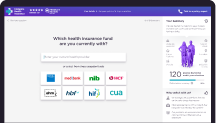Choose from hospital only cover, extras only cover or combined cover
If you’re a couple without kids, getting 2 single health insurance policies is often cheaper than a couple’s policy
Make sure you take otu health insurance before you turn 31 to avoid the Lifetime Health Cover Loading
Looking for Health Insurance for Singles? Here’s Everything You Need to About Singles Health Insurance to Help You Make the Right Choice.
The last thing most singles want to do is worry about choosing a new health insurance policy. Chances are you’re out enjoying life, soaking up adventures, beginning a new career, or perhaps even saving for a first car or home deposit. Well, while your mind and body could be feeling great now, you never know what’s around the corner and having hospital insurance, emergency ambulance cover or even extras cover will provide you with the peace of mind that you’re covered – just in case. But if you’re still unsure if insurance cover is for you, don’t worry, we get it. We’ve put together the following information to help you feel confident when the time comes to make a decision about your cover options for health insurance for singles. If you think you’ve got a pretty good handle on the basics, you can always get started with an online quote right now. In a few short minutes our comparison tool will show you a range of options from our health funds. Simply mix and match what you need from hospital and extras, and leave out what you don’t. Let us help you find the right singles cover.HEALTH INSURANCE FOR SINGLES COVER OPTIONS
1. HOSPITAL ONLY COVER
Hospital only cover is designed to pay benefits toward the cost of your treatment in hospital. There are 4 levels of hospital cover available to Australians You might see different names for these when doing your research, such as ‘platinum’, ‘saver’ or ‘budget’. These are just different names for those 3 levels. In short, the higher your level of hospital cover, the more procedures you will be covered for. Hospital cover also means you can avoid long public hospital waiting lists by being treated in private hospitals. That way you have the freedom to decide- Who you are treated by: some people might want a surgeon recommended by their doctor, family or friend
- Where you are treated: access to a private hospital close to home and a more comfortable environment can reduce worry
- When you are treated: On average, waiting times are usually shorter in the private system so you don’t have to live with discomfort for as long.
2. EXTRAS ONLY COVER
Extras cover reduces the cost of treatment for things that Medicare doesn’t cover. You’ve probably seen a bunch of TV ads promoting extras, but here are the specifics. Extras are there for non-GP (General Practitioner) services, such as:- General Dental
- Major Dental
- Optical
- Physiotherapy
- Remedial Massage Therapy
- Chiropractic
- Osteopathy
- Naturopathy
- As a percentage proportion of the fee charged by the provider (e.g. 65% back for a general dental consultation)
- As a fixed dollar per visit (e.g. $40 per Chiro visit)
Services
Private Hospital Cover
Medicare
Doctor and Hospital
- Choose your own doctor
- Treated as a private patient in either a public or private hospital
- Greater choice when admitted in hospital
- You may not have to wait for treatment
- A doctor will be appointed to you
- Treated as a public patient in a public hospital
- You may not be able to choose a hospital for treatment
- Treatment is free
Hospital and medical expenses
- Medicare covers up to 75% of the medical costs under the Medicare Benefits Schedule
- The remaining 25% or more of the medical costs of the MBS fee will be charged to you. Some or all of this will be covered by your insurer.
- Other costs incurred may include hospital accommodation, theatre fees, pharmaceuticals and diagnostic tests.
- Waiting lists apply
- There is no charge for public patients
- Medicare will not cover the following treatments: Private hospital costs, medical or hospital costs incurred overseas and medical treatment deemed not clinically necessary including cosmetic surgery.





